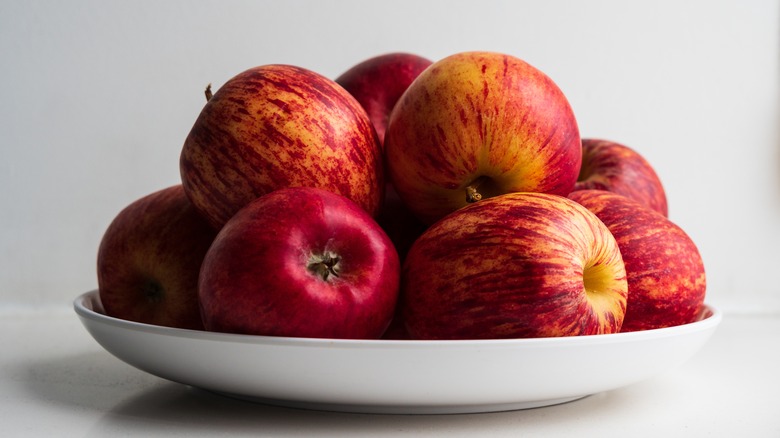The Reason Honeycrisp Apples Are So Expensive
When we're not busy comparing apples to oranges, we're comparing apples to apples. And one thing we notice time and time again is that Honeycrisp apples are usually significantly more expensive than other varieties. The question is, why? According to The Produce News, Honeycrisps consistently rank among the most popular apple varieties in the United States. Clearly, consumers are willing to pay a premium.
The Morning Call believes the attraction is in the crunch. In a 2018 article, a reporter for The Morning Call interviewed David Bedford, an apple breeder affiliated with the University of Minnesota, where he and his team created the Honeycrisp variety (via The Splendid Table). Bedford described the pre-Honeycrisp era as a time when there were just two kinds of apples — soft and mealy versus the good ones. That's a bit of a simplification, but there's some truth to it.
Consider how many of us can probably relate to an observation Bedford shared during a 2016 interview with The Splendid Table. "If I go back to my childhood, my career was almost derailed by a single apple, and that was Red Delicious," he recalled. "I was raised on Red Delicious and lost interest in apples because of that. It is and was a beautiful apple, but the flavor was not. I came into it thinking that apples are good for you, but not that excited about it."
The finicky apple
According to The Morning Call, The Honeycrisp variety we know today stems from a 1970s University of Minnesota apple-breeding attempt gone wrong. The original tree even had a name, MN1711. It didn't test well for winter hardiness, so the attempt was scrapped. David Bedford, who joined the program in 1979, discovered a few leftover MN1771 clones and gave them a second chance. By 1983, he had four small trees bearing what he called, "amazing fruit."
All good, right? Except for the hardiness issue. It did well in climate-friendly West Coast orchards, but Honeycrisps had Northeast producers jumping through hoops. Plus, the apples didn't hold up well under standard storage and shipping protocols (via The Morning Call). Released to the market in 1991 (via Home for the Harvest), Honeycrisps attracted a loyal following, incentivizing producers to adapt to its challenging quirks. Among the issues, according to The Morning Call, quick growth that blocks sunlight from reaching fruit on lower branches, a tendency to develop sunken brown spots, and thin skin that's easily punctured. It's a lot of extra work and even with the added effort, only about 60% of the fruit makes it to market (via The Morning Call).
The bottom line, Honeycrisp apples are more expensive than other varieties because they cost more to produce. In the meantime, producers are patiently awaiting the next big thing in apples — and hoping it's not as finicky as Honeycrisp.

